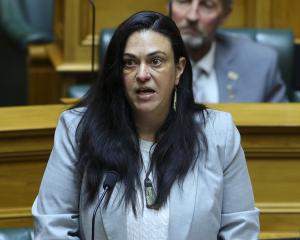So, now all has been revealed. We were hoodwinked by astronomers. That wasn't a planet we witnessed travelling across the face of the sun last Wednesday. No, the small dot identified as Venus was actually a compact space pod carrying the Government's class size policy on a journey to a part of the solar system untouched by political reality.
If you look closely at the photographs you can see Education Minister Hekia Parata looking down and enjoying the view, unaware she is losing all contact with the voting public as she sails serenely over the wishes of New Zealand parents.
But wait. What was that in the sky a day later? A comet? A shooting star? Venus returning?
Sadly for the Government, it was something a little closer to home and far more damaging - Mrs Parata burning up as she crashed back to Earth after a U-turn on teacher-pupil ratios of inter-galactic proportions.
Friday's headlines made grim reading for any member of the Government with the stomach to look at them: "Total surrender inevitable on botched policy"; "Humiliating backdown but damage done". This was a miscalculation that carried such blunt force its reverberations travelled all the way to London where John Key was attempting to enjoy the Queen's 60th Jubilee. One minute he's bowing to the Monarch, the next he's prostrate in front of the nation's teachers. It's fair to say that is not a position comfortably occupied by any prime minister, especially one from the National Party.
So the obvious question is: What on earth were they thinking?
If anything is guaranteed to trigger strong emotions in parents it is the notion that the quality of education their children receive is to be reduced.
The Government argued that the intent of its policy was the opposite, that spending more money on improving teachers while cutting the numbers of teachers employed would raise the achievement levels of New Zealand children. The move was to have saved $174 million over four years, sweetened by spending $60 million on "improving teacher quality and professional leadership".
Improving teacher quality is a laudable objective. But parents naturally saw this proposal in raw terms: a reduction in teaching staff of one or two teachers per school would result in bigger class sizes for their children.
Bigger class sizes would mean less opportunity for one-to-one contact and their children's education would therefore suffer.
This quickly became the established framework of an argument the Government suddenly looked very unlikely to win. Teachers are never sluggish in face of threats to their sector and in this instance they rightly had the support of a rising tide of parental displeasure. As a result there was only one possible outcome.
In hindsight, it was perhaps no surprise how quickly the Government reversed its position. The backdown on proposed cuts to the Ministry of Foreign Affairs and Trade earlier this year showed - again - this Government's distaste for sticking with unpopular policies. Mr Key is nothing if not a fan of smooth sailing, even at the expense of a few smacks to the face in the short term. Indeed, he told National Radio on Friday that, "Perception is reality and the risk I think was that [proposal] derailed the rest of the good work we're trying to do in education. So, really, was it worth months of industrial action and the likes? And I think the answer to that's no."
What is surprising, however, is that the Government did not see this coming and blundered blindly into a mess of its own making. Modern politics has made an art of bite-sized, highly targeted information delivery.
Whoever thought this scheme up without perceiving how its key point would be received by voters clearly needs more one-on-one time at spin doctor school.











